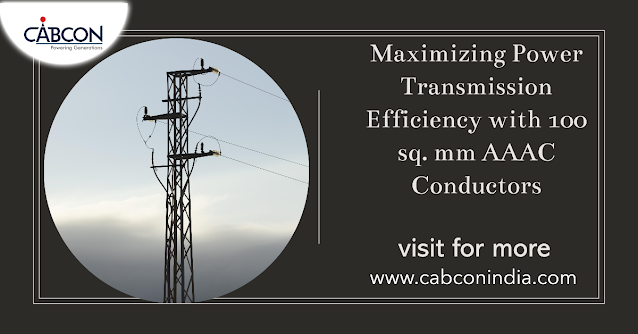In our increasingly electrified world, efficient power transmission is of paramount importance. Across vast distances, from power plants to substations and eventually, to our homes and businesses, electrical energy must travel through a complex network of conductors. The 100 sq. mm AAAC conductors play a pivotal role in ensuring that electricity reaches its intended destination with minimal loss and maximum efficiency.
The cutting-edge technology represents a
significant advancement in the field of power transmission, offering a range of
advantages over traditional conductors like AAC (All Aluminium Conductor) and
ACSR (Aluminium Conductor Steel Reinforced).
Enhanced Conductivity and Mechanical
Strength:
The conductor is manufactured from
aluminum alloy strands, which exhibit higher electrical conductivity compared
to standard metal conductors. Additionally, the alloy composition endows
the conductor with improved mechanical strength and durability. This
combination of enhanced electrical and mechanical properties allows for more
extended spans between transmission towers and higher current-carrying
capacity, reducing the need for additional infrastructure.
Lower Sag and Reduced Line Losses:
One of the main challenges faced by
traditional conductors is the sag that occurs due to thermal expansion under
heavy loads. The AAAC conductor mitigates this issue by having a
lower coefficient of thermal expansion, resulting in reduced sag. This
characteristic is particularly advantageous in areas with extreme temperature
fluctuations. The lesser sag ensures a safe distance between the conductor and
any nearby structures, reducing the risk of electrical accidents. Additionally,
reduced sag means fewer line losses, thereby improving overall efficiency and
cost-effectiveness.
Corrosion Resistance:
The aluminum alloy composition of the
conductor imparts excellent corrosion resistance, making it well-suited for
installation in coastal regions or areas with high humidity levels. This
resistance ensures a longer lifespan and minimal maintenance requirements,
which is an essential factor in reducing operational costs and downtime.
High Ampacity and Overload Capacity:
Due to its superior electrical and thermal
characteristics, the 100 sq. mm AAAC conductor price can
handle higher ampacities compared to conventional conductors of the same size.
This increased ampacity allows for better load management and improved capacity
to handle temporary overloads, such as during peak usage periods or emergency
situations.
Environmental Benefits:
The use of these conductors contributes to
a greener environment. The production of aluminium is less energy-intensive
than that of other metals like copper. Moreover, the AAAC conductor’s
lightweight nature reduces the load on transmission towers and support
structures, leading to lower energy consumption during installation and
transportation.
Flexibility and Ease of Installation:
The AAAC conductor’s lightweight and
flexible design make it easier to handle and install, reducing the overall
installation time and costs. Its flexibility also allows for more
straightforward installation around bends and corners, making it suitable for
various terrains and topographies.
High Tensile Strength:
The aluminium alloy construction provides
the mentioned conductor variation with high tensile strength, making it more
resistant to mechanical stresses and environmental factors such as wind, ice,
and seismic events. This increased strength ensures the conductor’s structural
integrity and reliability even in challenging weather conditions.
Longevity and Low Maintenance:
Thanks to its corrosion resistance and
robust mechanical properties, the 100 sq. mm AAAC conductor offers an extended
service life. With proper installation and maintenance practices, these
conductors can last several decades, resulting in reduced replacement and
maintenance costs over time.
Wide Range of Applications:
The conductor finds applications in a wide
range of power transmission projects, including overhead transmission lines for
both medium and high-voltage systems. Its adaptability to different voltage
levels and capacity to handle higher current loads make it a versatile choice
for diverse power distribution needs.
Cost-Effectiveness:
While the initial cost of the acsr conductor
size chart may be slightly higher than traditional conductors, its
long-term cost-effectiveness makes it a wise investment. The reduced line
losses, minimal maintenance requirements, and extended service life contribute
to significant savings in operational expenses over the conductor’s lifespan.
The 100 sq. mm AAAC conductor stands at the
forefront of modern power transmission technology, offering numerous advantages
that cater to the demands of an evolving energy landscape. Its enhanced
electrical conductivity, mechanical strength, corrosion resistance, and low
maintenance requirements ensure efficient and reliable power distribution while
contributing to environmental sustainability.

Comments
Post a Comment